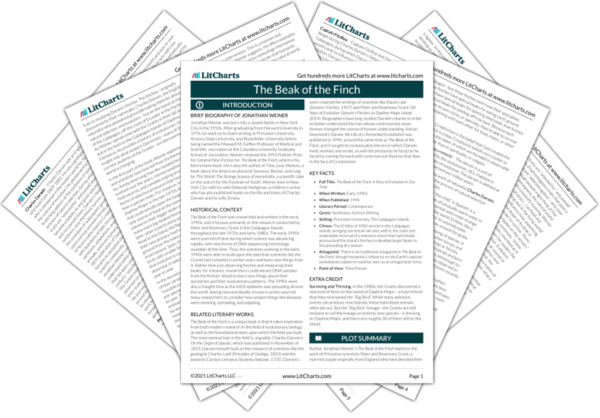Evolutionary processes aren’t just ongoing—they’re often mysterious while they’re still unfolding. The Grants aren’t sure, in this moment, exactly what has “changed since the flood,” but they know that something significant is going on. This section of the book is pivoting toward a deeper understanding of what hybridization means for the world’s species—and how it might influence ongoing evolutionary events all over.
